When you purchase through links on our site, we may earn a commission at no additional cost to you. Learn More
Most winch owners will find their winch cable stuck or jammed up at some point. You set the winch to free spool, but the cable won’t pull out no matter how hard you try.
In most cases, you will be able to free up cable quite easily by knowing the tricks we will cover in this post. Other times you get a bird’s nest of cable that you won’t be able to untangle without disassembling the winch or cutting the cable.
The tips in this post will work just as well on ATVs, UTVs, as with offroad-trucks.
Page Contents
Which method works best to untangle your jammed up winch-cable depends on the jam’s type and severity.
Winch cables get stuck for a wide range of reasons. Here are the most common ones, with guidelines on which method to use.
Begin with the first recommended method as it will be the fastest and less likely to cause damage. Then move your way through the other methods until you succeed.
It’s a widespread scenario that many winch owners run into: You put the winch to free spool, but the cable is stuck and won’t come out.
Most of the time that a cable is stuck, it’s because it is pinched between the cable windings. This happens when you put a lot of force on a cable that previously was only loosely spooled back onto the drum.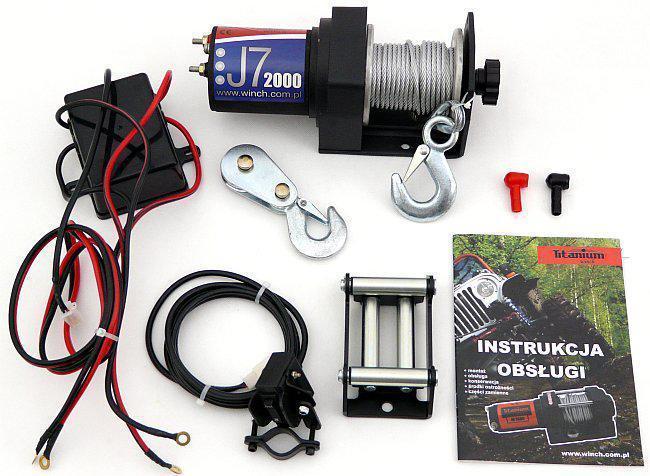
These cable jams are usually not that bad and can be fixed quite fast with minimal risk of damaging the cable or the winch itself.
Work your way through methods one to three.
The cable or rope has to be distributed evenly over the winch drum width for all of it to fit. Sometimes, however, the situation requires that you winch at an angle. If you are not careful, you end up overfilling the winch drum on one side.
Begin with method six before working your way through methods one to five.
The winch cable needs to be under constant tension, whether you are winching in or unspooling.
For some reason, if you get a little slack in the cable, the tightly spun windings may come undone. One coil ends up over the top of another, and you have a bird’s nest of a mess before you know it.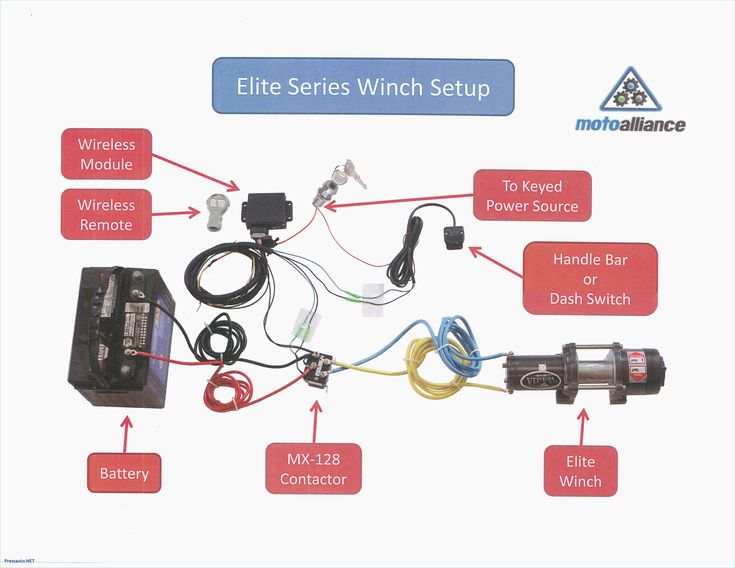
The only way to fix this is by unspooling until you get past the bad spot and then spool back in neatly.
Gently try methods one to three. If this does not help, move over to method four or five.
Steel winch cables are lightly oiled when they are new to prevent rusting. This light coat of oil wears off after only a couple of times of use.
If you leave a wet steel cable sitting for a more extended period, it will rust, leaving it hard or impossible to unspool.
Winch cable rusted after sitting outside.Generously spray the drum of rusted cable with PB-blaster or a similar product, and let it sit a little to allow the product to begin loosening up the rust. Then move your way through methods one to three until the cable frees up.
 You will know when to stop by noticing when the cable does not unspool any further. Because of the bind, it will instead reverse and begin pulling the cable back in either way you turn the drum.
You will know when to stop by noticing when the cable does not unspool any further. Because of the bind, it will instead reverse and begin pulling the cable back in either way you turn the drum.
This method is as far as you should go without having to disassemble the winch. As with method 2, you need to attach the cable to a stationary object.
As with method 2, you need to attach the cable to a stationary object.
But instead of having the winch set to free spool, you will be spooling out the winch while gently backing up the vehicle to apply tension to the cable.
Do not use speed or yank hard on the cable, as this may ruin the gears inside your winch. Winches are designed to pull, but not to be pulled on!
Bad jams or messy bird’s nests are not always salvageable without disassembling the winch. Getting a winch apart is not hard, but you need to pay close attention to how things go together. You do not want to find yourself with a table full of gears that you don’t know how to put together.
Tip: Take photos as you disassemble to help you if you forget what goes where.

If none of the above methods helped to free up the winch cable, you might need to cut it to get it off the drum.
If the tangle has left a bunch of bends and kinks in the cable, it should be replaced anyway. A steel cable that gets kink weakens where the bend was. It also gets curly, making it harder to spool back to the drum nicely.
 Make sure to wear protective glasses as these discs tend to break and shoot splinters out in any direction.
Make sure to wear protective glasses as these discs tend to break and shoot splinters out in any direction.A winch that is overfilled with cable on one side from winching at an angle is easier to free up if you lubricate it with some oil before trying the above methods.
Use a good lubricating oil free from acids and corrosive substances. Make sure to wipe off any excess oil as oil retains dirt, which will wear the winch and cable prematurely.
When it comes to preventing suck winch cables and winch ropes, the key is in the preparation. Here are a few essential tips to avoid cable chaos in the future:
Both steel cables and synthetic ropes have to be wrapped to the winch drum under load in a neat and even pattern.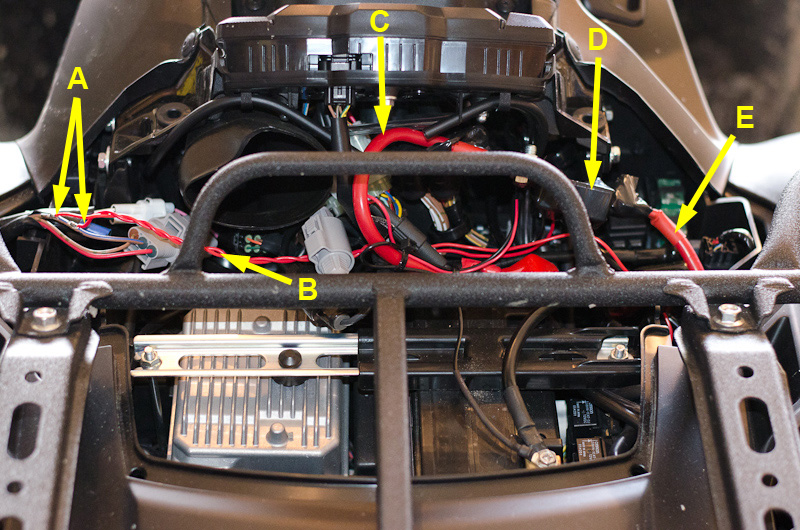 Winding the cable on too loose will allow the cable to move around and cross over on itself.
Winding the cable on too loose will allow the cable to move around and cross over on itself.
This will cause it to bind up when you add tension. The goal is to make sure the lower cable windings are wrapped tight so that the free end of the cable does not slip down between them when you add tension.
A tight and smooth wrap is essential with synthetic ropes. A synthetic is less likely to jam as long as it was spooled correctly. If not wrapped properly, a synthetic rope is, in fact, more likely to get stuck than a steel cable.
Head over to this step-by-step guide if you want to learn how to install a winch cable or rope to your winch properly.
The winch cable will often spool back up quite randomly and messy as you do the winching.
To prevent binding next time you use the winch, you should unspool and re-spool the cable neatly while under tension after each use.
In the heat of the moment, it is easy to forget this vital aspect of winching. But it is the most useful tip to prevent problems down the line.
But it is the most useful tip to prevent problems down the line.
People that use their winches professionally don’t have time to mess around with stuck winch cables.
Consider installing a fairlead with a spring-loaded roller. This type of fairlead makes sure that there is always tension on the cable when you spool it back in, allowing it to spool back onto the drum, tight and neatly.
A steel cable that is full of bends and kinks is tough to spool back in neatly. If you find yourself getting a stuck cable regularly, you may save yourself some agony by getting a new, smooth cable.
Many winches use an anchoring hole through the hub of the drum to hold the cable in place. The cable is locked into the hole or slot with a set screw or held in place with a wedge.

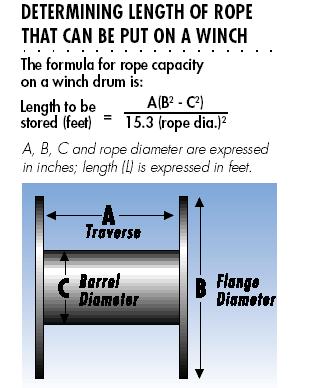
This guide is made to help you troubleshoot the most common ATV winch issues. It will also point you in the right direction on how you should go about fixing them.
ATV winches are tough. They can handle incredible amounts of use and abuse. And as long as you steer clear of the cheapest models and you treat it well with some maintenance now and then, you should expect many years of hassle-free winching.
But from time to time, even the best will face some technical issues that need to be addressed.
Luckily, there is a lot you can do yourself to troubleshoot and repair an ATV winch that doesn’t work as it’s supposed to.
Page Contents
ATV winches are small but still powerful and potentially very dangerous. If you have any doubts or lack the basic mechanical skills to perform the troubleshooting or repairs described in this post, you should rather take it to an authorized dealer and let them take care of it for you.
A winch out of control has the potential to inflict damage to your equipment or possibly cause severe injury to yourself or others.
I’ve structured this guide so that you can start your troubleshooting based on what symptoms you are experiencing. After all, that’s how it starts; suddenly, the winch will start behaving differently than it should.
This will lead you to the root of the problem much faster than by just randomly testing all the different things that can go wrong.
For many of the symptoms, there are several possible causes, and some causes may give several types of symptoms.
After you have determined what’s causing your problem, you’ll find a suggested solution to the issue.
With the engine running, you push the winch switch, but nothing happens. The winch motor is not turning. Not even making a click or a buzzing sound.
The fastest way to troubleshoot a winch that does not give any sign of life is by isolating the problem.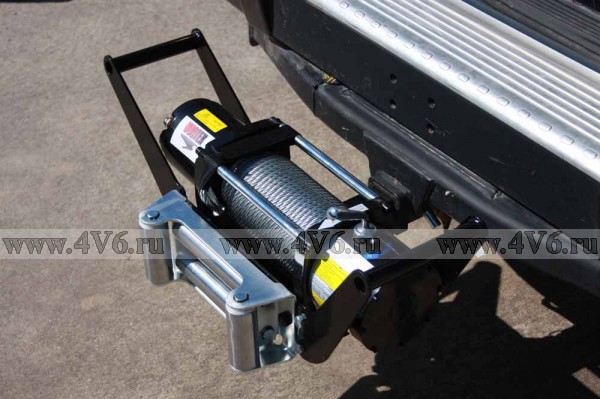
Before you spend too much time investigating other possible causes, it’s a good idea to determine whether the problem is with the winch itself or with the wiring.
To do this, you simply need to perform this quick test:
This test will bypass all of the wiring and other electronics and will tell you if the winch motor is working or not.
Test the winch motor using starter cables.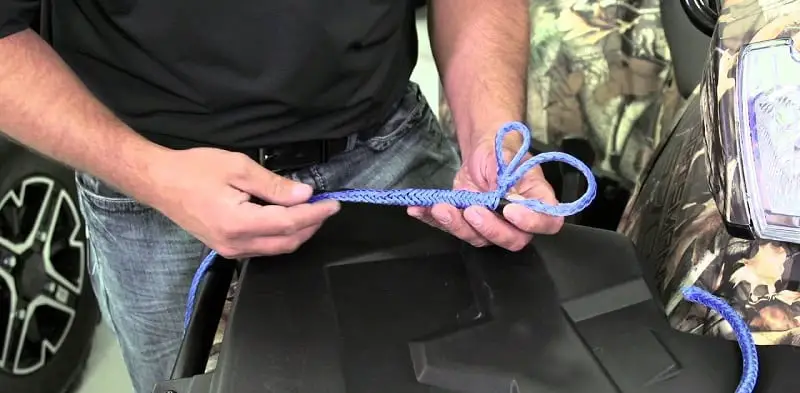 Some sparks when tapping like this are normal.
Some sparks when tapping like this are normal.Now you should know what causes to look at for further troubleshooting.
Some winches, but not all, have a circuit protector or a fuse that is meant to blow when the winch, for some reason, is pulling too much power. A circuit breaker may also trip if it gets submerged in water.
Suggested Solution: If the fuse is blown, replace it with a new one with the correct amp rating.
Suggested Solution: The circuit-breaker may need to be reset manually if it’s been tripped.
If the winch starts working again, you have fixed the problem.
If the new fuse blows again right away or the circuit breaker trips, you likely have a short somewhere.
A short happens when the positive (red) cable gets in contact with any metal part, like the bike’s frame, due to a damaged cable. A faulty switch may also cause a short.
Suggested Solution: Repair or replace any damaged cables or broken switches that are causing the short.
If you can’t find any shorts in the wiring, a short may also be inside the winch itself or in the contactor—more on that further down.
A completely dead winch often indicates that it’s not getting any power or that something is not grounded the way it should be.
Suggested Solution: Make sure the winch is wired correctly.
If it has been working correctly before and you haven’t done any modifications to the wiring, an incorrect installation should not be what’s causing your issue.
But if you’re in the process of installing a new winch now, and you can’t get any sign of life, it’s a good chance you’ve got the wiring wrong somewhere.
All winches should come with a complete wiring diagram.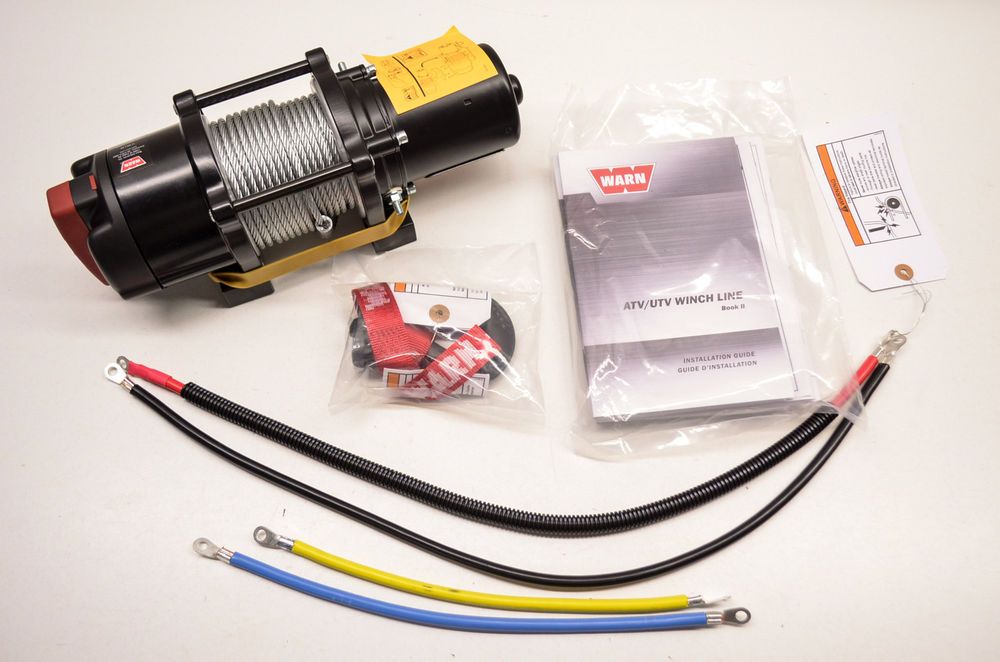 Make sure you follow it to the point!
Make sure you follow it to the point!
The basic principles on how to do the wiring should be the same on any winch. But it’s worth noting that you will see some minor but important differences between the different brands.
Commonly, the contactor’s battery terminals have different setups, where connecting the wires wrong may lead to a dead winch.
When the winch has been installed on the bike for a while, the cable terminals may corrode or come loose.
Winch cable connector that’s slightly corroded.Suggested Solution: Dissasemble and clean all terminals, one by one, to make sure you have a good connection everywhere and that they are properly fitted. Any corrosion can be removed with some sandpaper so that the terminals become shiny again.
Any switch can break due to material fatigue when it’s been pushed enough times. Cheaper winches usually come with less robust switches that will break sooner.
It may also stop working due to water entering and corroding its internals. Again, the cheaper ones are often less protected and are more likely to be acting up after a few encounters with salt and water.
If a switch is damaged or corroded, it may not engage the winch at all when you push it.
There are several ways you can go about troubleshooting a bad switch:
If the bike has more than one switch to activate the winch, you should begin by testing them both to see if one of them works.
Wireless remote and remote rocker switch.It is doubtful that both switches will fail at the same time. If one works, but you get no reaction from the other, it has likely gone bad.
If you have only one switch, you can determine if it’s defective by testing if the winch works when you bypass the switch:
Bypass the remote switch to make sure it’s not what’s causing the issue.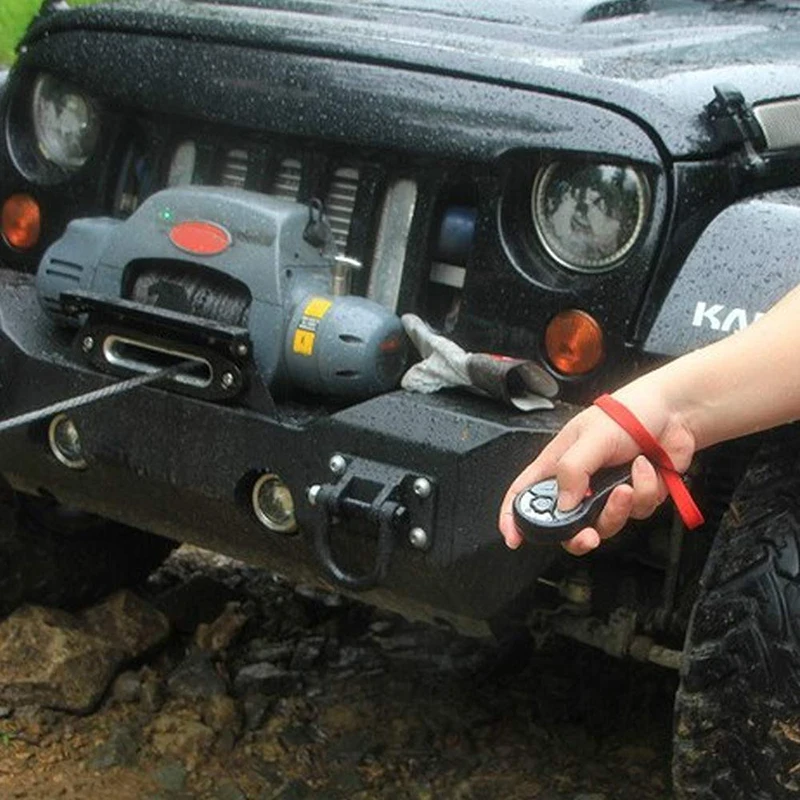 You don’t want the winch to be doing any actual winching when performing this test. You only need to see if the winch engine is starting or not.
You don’t want the winch to be doing any actual winching when performing this test. You only need to see if the winch engine is starting or not.Suggested Solution: Replace the damaged switch.
If none of the above resolved your issue, and the system is simply just dead silent even when performing the jumper cable test, you are likely facing some sort of issue with the winch motor itself.
Another way to test the engine is by reading voltage drop across the motor. You need a multimeter to do this test.
You need a multimeter to do this test.
Possible Solution: Clean the motor. The electric motors inside winches are actually quite simple and robust. But they are not completely fail-proof. And sometimes dirt may enter the motor housing, creating a dead short.
Disassembling the motor and giving it a good clean may be all that it takes to bring it back to life.
Use brake-clean to clean the winch motor.
If cleaning does not help, it may have a burnt coil or a short in the motor armature. This may happen if you wire the winch incorrectly or if it’s been overheated.
Possible Solution: Replace or repair the damaged motor. If the motor is damaged, it may need replacing or a complete rebuild performed by a specialist.
The brushes will wear over time, or they may become damaged from a damaged armature commutator.
Suggested Solution: Replace worn or damaged brushes. If the motor has some age to it, the brushes may be worn and need replacing. And if the motor armature gets damaged, it may also damage the brushes.
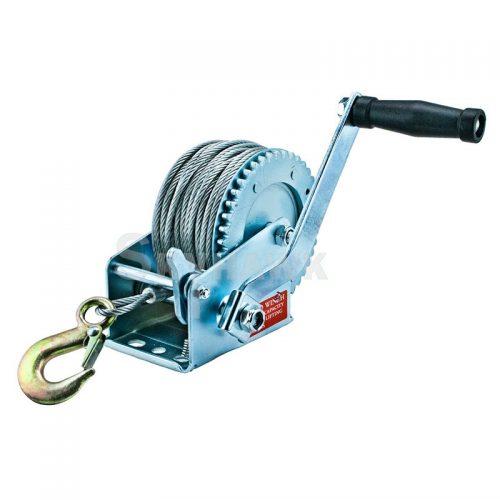
When you engage the winch, either using the handlebar rocker switch or a wired or wireless remote, the winch motor will turn just one way.
It may spool in but not out again, or it may spool out but without being able to spool it back in.
Before you spend time and money on more expensive parts, it’s a good idea to make sure the problem is not in the wiring, as these kinds of issues are usually cheap and simple to repair.
Again, the cause of the issue maybe some sort of wiring issue.
But before you check the rest of the wiring as described above, you should start by looking at the cable that goes from the remote switch to the contactor.
The cable itself may be damaged, or the connector at the contactor may have come loose.
Also, check if the pins inside the remote control plug have become pushed out of position or bent.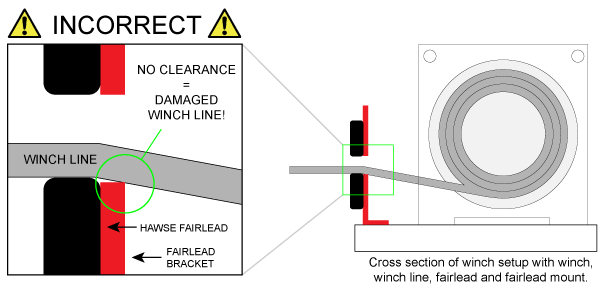
Suggested Solution: Repair or replace any damaged wiring.
If the switch is only partially defective, the winch may not go completely dead but can work in only one direction. Test the switches as described above to see if they are all working properly.
If you’ve ruled out that the problem is not in your wiring, you will likely find it in the solenoid inside the contactor.
You can compare the contactor to an ordinary relay. They have the same purpose: To prevent sending all of the current directly through the remote switch, which would require a very impractical huge switch.
The contactor is basically a huge switch that can handle high currents. It’s activated with a low current from a much smaller switch.
This contactor uses only black and red color-coding. Others use yellow and blue as well.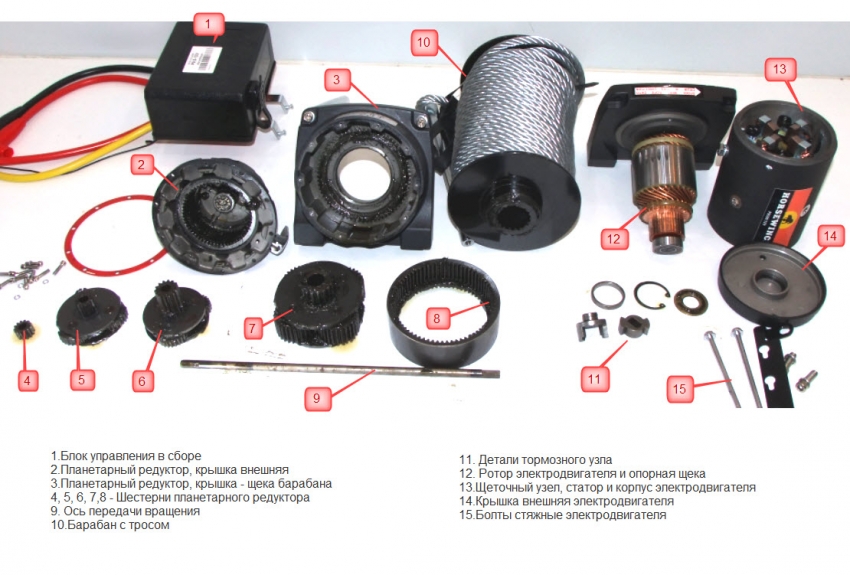
All ATV winches will have one, and its job is to switch between sending a positive and negative electric current to the winch. This is what determines which way the engine turns.
Inside the contactor, you’ll either find one two-sided or two single-sided solenoid magnetic coil switches. One is activated when pressing the in button, and the other is activated when pressing the out button.
When the solenoid works as it should, it will physically move when it’s being activated. This is what makes the audible clicking sound when you activate the winch switch.
A two-sided solenoid will have four battery cable connections, where one side is wired + to – and the other side is wired – to +. These are often marked with red, black, blue, and yellow, matching the wires that go on them. Some winches use only red and black color coding.
Solenoids do, however, tend to break or get stuck. When it’s stuck, you won’t get it to switch between positive and negative current.
Suggested Solution: You can try gently tapping the contactor with the handle of a screwdriver to free it up.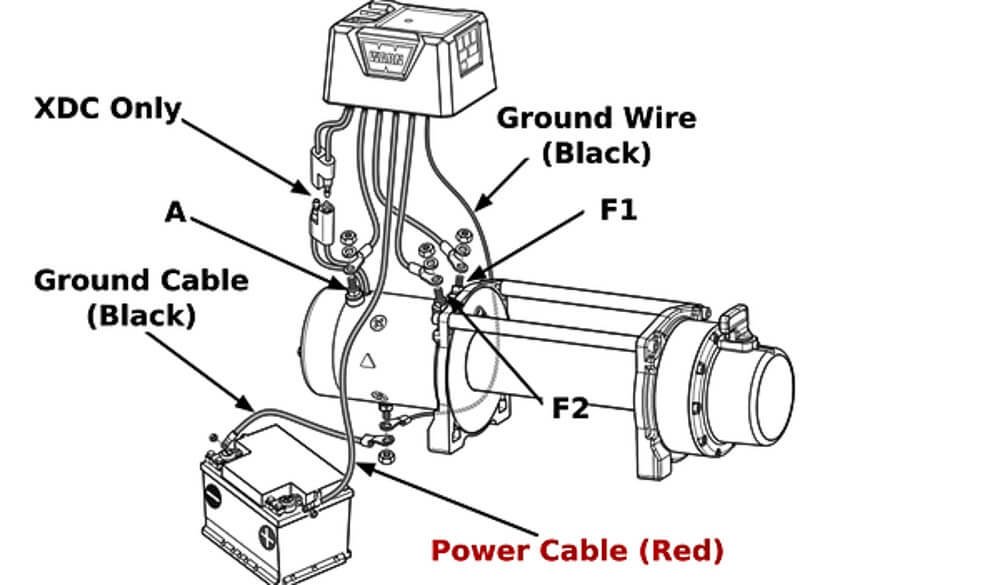 But this will just be a temporary fix. It may soon get stuck again until you replace the contactor with a new one.
But this will just be a temporary fix. It may soon get stuck again until you replace the contactor with a new one.
Because of the wet and muddy conditions that lead you to get a winch in the first place, the solenoids may rust over time. Rusted plungers will not move freely, so that you don’t get proper contact.
When you take off the contactor cover, you will quickly see if corrosion is what’s causing your issue.
Suggested Solution: Replace rusted contactor.
You can test the solenoid by hooking a test light on the cables that go to the winch.
Test first with the blue, then with the yellow. If you don’t get a light with one of them, you likely have a bad solenoid.
A good way to protect your new contactor is by slathering it with dielectric grease and make sure it’s placed up high and dry.
This one is widespread, and when it comes to troubleshooting, it has a positive side to it:
When you hear an audible click sound, you know that the contactor is getting power when the switch is being pushed. This means that everything up to the contactor, including the switch, should be fine.
This means that everything up to the contactor, including the switch, should be fine.
Suggested Solution: Start by making sure the battery is fully charged and has a voltage reading of at least 12,4V. Remove the battery terminals and clean them to ensure a proper connection.
Also, make sure that the grounding cable on the winch motor housing is properly fitted.
This leaves either the winch motor or the contactor.
When you are in a situation like this, you want to rule out one or the other. Again, the easiest way to go about doing this is by performing the jumper cable test as described above to see if the winch is working or not.
If the winch works as normal when you power it with jumper cables, the issue will very likely be in the contactor.
The solenoids may be firing up, but they are not connecting. This may be due to corrosion or damage from overheating.
Suggested Solution: In this case, the contactor needs replacing.
If the motor does not turn as normal when being fed power directly from the battery, you know it has some issue.
The possible causes for it not working and procedures for troubleshooting and fixing are the same as when the winch is completely dead.
If the winch works fine sometimes, but other times it just makes a clicking sound, the cause of the issue will likely be the same as when you always get clicking, and the winch never works. Just follow the steps above, and you should find your problem.
If the winch works sometimes, but other times is completely dead, you are more than likely facing a loose cable, creating a bad connection somewhere. Go over the wiring, and make sure nothing has come loose.
You may find that the winch turns but does so very slowly. It seems to seem to be down on power or may even stall out when pulling loads that it normally should manage just fine.
It seems to seem to be down on power or may even stall out when pulling loads that it normally should manage just fine.
This may be due to a damaged motor, as described above, where you just get a clicking sound. Other possible causes are:
If the cable or rope, for some reason, is not spooled onto the drum in the correct direction, it will work against the automatic brake. This will be like trying to drive your car with the handbrake on.
Suggested Solution: Spool the cable or rope all the way out, and re-install it in the correct direction. There should be a sticker indicating correct drum rotation.
Suggested Solution: Fully charge the battery. Replace it if the battery is damaged. Clean terminals.
If the battery keeps draining, even after replacing it, the issue may be with the bike’s charging system.
Related: 10 Reasons Why Your ATV Battery Keeps Draining (Going Dead)

Suggested Solution: Please refer to the procedure for re-greasing the gears when the winch won’t free spool.
If you put too much grease in the planetary gears, have used the wrong grease (too thick), or if the grease has gummed up due to water contamination and age, the gears will not turn as freely as they should.
Suggested Solution: Remove old grease, apply correct amounts of new grease.
Brand new planetary gears with factory grease.
If your winch cable has become all jammed up and goes in no matter which way you run it, this little trick may get you out of a pinch.
This works most of the time. Other times it just makes the situation a lot worse.
Another tip is to put the winch in a free spool position and use another winch to pull it out.
While some heat is normal whenever the winch motor is being put under a heavy load, you may find that it gets abnormally hot after being used for a short time.
Also, note that operating the winch over a long period may also overheat it, with the risk of permanently damaging the motor. Take breaks to allow the motor to cool down.
Take breaks to allow the motor to cool down.
Suggested Solution: Remove the winch motor end cap. Use some fine sandpaper or emery cloth and give both the motor end shaft and the inside of the bushing a light rub.
Suggested Solution: Replace winch motor.
The motor may be turning, but you cannot get the winch to engage. Or you may have problems getting the winch to disengage to the free spool position.
When the engage lever does not budge, the problem can be with the knob/ lever itself or with the gears; it operates.
Suggested Solution: Clean, remove rust and apply new grease.
The lever needs to come out to be cleaned, and any rust must be removed.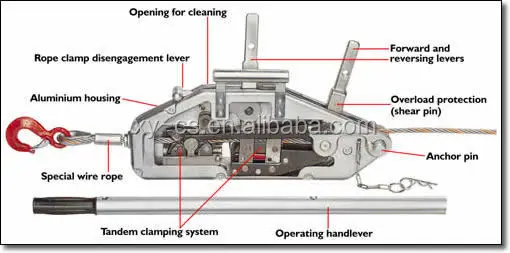 Some levers can be removed without disassembling the winch.
Some levers can be removed without disassembling the winch.
Other winch models require some disassembly for the lever to come out.
Now that your winch is already disassembled, it may be a good idea to service the gears while you are at it.
Suggested Solution: Clean and remove corrosion. Apply oil.
Inside the winch, on many models, there is a ring gear that needs to slide freely sideways for you to be able to engage and disengage the winch.
If this gear or the outside diameter of the winch housing it slides up against starts to corrode, it will become stuck either in the engaged or disengaged position.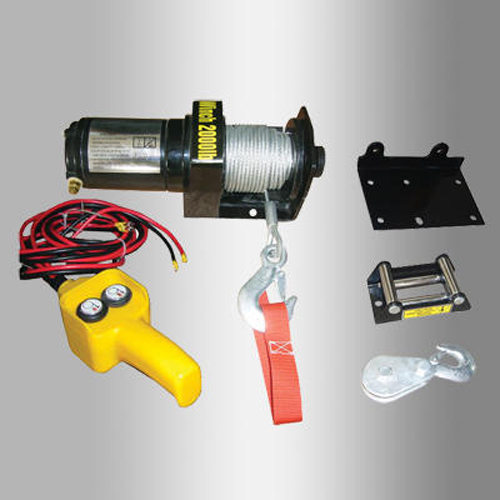
Dirt and other debris won’t help the situation either.
Disassemble, clean, remove rust, lightly coat gear and housing surface with oil, and reassemble.
It may also be hard to get this ring gear to slide if someone mistakenly has applied grease on the outside of the gear or to the inside of the gear housing.
While the other winch gears should be lightly greased with some CV-joint type grease, this is not true for the ring gear.
The grease will create too much drag, making the gear hard to operate. A light coat of oil is all that should be used here.
If the gears have become damaged somehow, you may not be able to budge the engage lever at all. Using the winch to tow someone, or trying to yank on someone that’s stuck, is a common rookie mistake that is likely to strip the gears.
Suggested Solution: Replace damaged gears.
You need to disassemble the winch and inspect for damaged gears. All damaged parts can be replaced to get the winch back in working order.
Warn, and many other ATV winch manufacturers use a design where you need to twist a knob at the end of the winch housing to switch between free-spool and locked position.
However, this design seems to be a bit more fragile than the angled knob often seen on larger winches. Some models have issues with the knob getting stuck due to bad design.
What happens is that the knob gets stuck when it is over-rotated, and the clutch bar gets hung up on a small plastic sliding ramp that’s part of the design.
You can disassemble the knob to put everything back in place, but if your winch is affected by this issue, you will soon get it stuck again if you are not careful.
Suggested Solution: Get upgraded parts from the manufacturer.
If you face issues with engaging or disengaging a winch that uses this type of knob, I suggest taking it to the dealer to get upgraded replacement pars if it’s still under warranty.
Even if you managed to get the winch to disengage properly, it very hard to free spool. It requires a lot of force to pull out the cable/rope.
It requires a lot of force to pull out the cable/rope.
If you engage or disengage the winch under load, it may create a burr outside the ring gear. This creates mechanical friction and makes it harder to free spool the winch.
Suggested Solution: Use a file and gently remove any burr. Apply oil before reassembling.
The sliding ring gear and the inside diameter of the winch housing that it slides against should not be greased.
Not only does this makes it hard to engage the winch, but it will also create drag, making it hard to free spool the winch.
Suggested Solution: Remove grease, apply a thin layer of oil.
If you winch at an angle, all the cable will stack up on one end of the drum.
This may not only get the drum stuck, but it may also damage the drum itself by forcing the sidewalls outwards.
Suggested Solution: Disassemble and try to straighten the drum walls. If it cannot be repaired, the drum needs replacing.
Suggested Solution: Try troubleshooting why it won’t engage as described earlier.
Whether it is due to using the winch, the clutch not being completely engaged, or from incorrect use like towing or yanking, the gears may be stripped.
Inspect all of the winch gears.Suggested Solution: Disassemble the winch to inspect the gears, and replace them if needed.
The winch is an important device that allows you to pull out the car without outside help if it suddenly gets stuck somewhere in the mud, sand or snowdrift. The whole process of emergency towing takes place with the help of a winch motor, which winds a cable or sling around a spinning drum. Sometimes situations arise when the cable jumps off the mount and needs to be re-attached to the base of the drum. Since such situations arise at a time when you are left on your own with your own problem, it is advisable to be able to change the cable on the winch. If you have not yet mastered this skill, then this article will help you a lot.
Sometimes situations arise when the cable jumps off the mount and needs to be re-attached to the base of the drum. Since such situations arise at a time when you are left on your own with your own problem, it is advisable to be able to change the cable on the winch. If you have not yet mastered this skill, then this article will help you a lot.
In the event of a break of the winch cable , it is important to first determine the causes of the breakdown, since it can happen again at the most inopportune moment. A broken cable or sling from the traction drum can not only cause damage to the winch or vehicle, but also injure people who are nearby. As a rule, the winch cable can fly off due to several reasons:
 Therefore, if there is such an opportunity, it is better to entrust the laying of the winch cable to specialists from the nearest service center or service station.
Therefore, if there is such an opportunity, it is better to entrust the laying of the winch cable to specialists from the nearest service center or service station. 
Considering all the possible causes of a broken winch cable is quite difficult, but it is important to prepare as best as possible for possible difficulties.
At first glance, winch rope replacement is not an easy task, but it is actually much easier than it looks. The process itself consists of several stages:
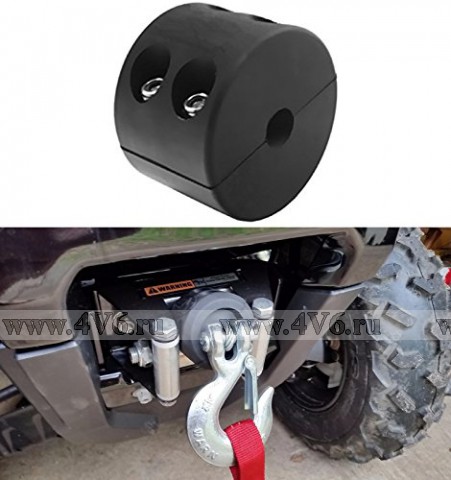 If the bolts are torn off due to damaged threads, then you must contact the workshop to cut a new thread and replace the fasteners;
If the bolts are torn off due to damaged threads, then you must contact the workshop to cut a new thread and replace the fasteners; After these steps, the winch can be put back in place and connected to the power supply. It is important to remember that in no case should you unwind the winch completely. During operation, 5-6 turns of the cable should always remain on the drum, since the fastening on some bolts will not last long and will break in a matter of seconds. Alternatively, the last 1-1.5 meters of cable wound on the winch can be painted in a bright color. This will allow you to accurately determine whether it is still possible to unwind the winch or if it is no longer worth it.
When installing or replacing a cable, it is important to pay special attention to its type, as different connectors may be needed for different applications. There are two main types of winch cable:
There are two main types of winch cable:
It should also be noted that elastic cables are sensitive to abrasive particles, which can lead to breakage over time. Therefore, after each trip, the cable should be inspected for damage.
home → Useful materials → Off-road educational program → Automobile winches. Use and maintenance of
In the last article we talked about how to choose and install a car winch. Now we will talk about how to use it correctly. To begin with, as always, before working with complex traumatic mechanisms, a safety briefing.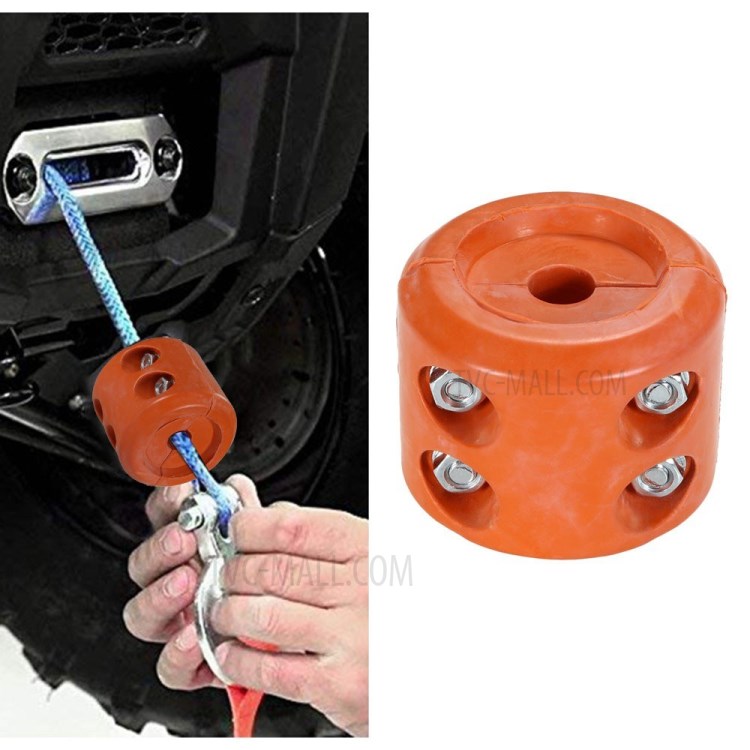
1. When traveling, be sure to take thick gloves with leather palms. You will be working with a metal cable, which will “shatter” during operation, so simple work gloves will not work.
2. Never stand between the vehicle and the cable anchor point while the winch is running. It happens, especially after prolonged use, or with excessive effort, that the winch cable simply breaks. I'd rather not talk about the consequences. "Do not stand under the arrow" on the winch, unfortunately, cannot be written, so just remember this.
3. When “lying”, use a special “damper” of the cable or, at worst, a banal quilted jacket, which should be placed on the tensioned cable as a damping element. If the cable breaks, the cable safety device will take on a significant part of its kinetic energy.
4. Never step over a cable that is under load. I hope it's clear why.
5. Do not use the winch cable to jerk another vehicle, it is not designed for this. 6. When attaching the winch to a tree, use a bark protection sling, "Protect nature, our mother !!!"
7. Never swans on telegraph poles, power lines, lighting poles, road signs and bollards, geodetic signs, and the like. Do not be offended by the seeming absurdity of this paragraph ... but, it is better that we remind you of this once again and you will not have to deal with angry summer residents who are left without electricity through your fault.
Never swans on telegraph poles, power lines, lighting poles, road signs and bollards, geodetic signs, and the like. Do not be offended by the seeming absurdity of this paragraph ... but, it is better that we remind you of this once again and you will not have to deal with angry summer residents who are left without electricity through your fault.
8. Do not use your fingers to help evenly lay the cable. Consequences, again no comment.
9. When lifting the machine uphill, be sure to use safety ropes.
10. Do not use a "knocked" cable, it may not withstand work under load.
11. For everything else, follow the winch's instruction manual, common sense and our advice .
After installing the electric winch, try simply winding the rope yourself. On the one hand, in a calm environment, you will figure out how it turns on and off and works, and on the other hand, a hidden problem, if any, has a chance to appear not in the forest, but during this trial test. If the winch heats up excessively, even at minimal load, or runs very slowly, with a sharp metallic crunch, or does not turn on at all, you have a direct route back to the installation center, and (or) to the seller of this product.
If the winch heats up excessively, even at minimal load, or runs very slowly, with a sharp metallic crunch, or does not turn on at all, you have a direct route back to the installation center, and (or) to the seller of this product.
Let's hope the trial run was successful. Going on the road, do not forget to take gloves, a bark-protecting sling, a reinforcement block, two or three shackles to securely fasten the winch cable to the sling and, if you know that you are in for a swampy area poor in trees, an additional extension in the form of a cable bay. And here you are in the forest and FINALLY .... stuck !!! REMEMBER that the declared traction force is developed by a car winch on the first turns of the cable, that is, on an almost empty drum. But, the winch cable is attached to the drum with only one bolt, so try to leave at least five turns on the drum. No matter how insignificant the obstacle that stopped your car may seem to you, try to find a suitable place for fixing the winch cable at the maximum available distance. How many winches for jeeps were destroyed, only because the owner of the winch, having incorrectly assessed the severity of the obstacle, unwound five or six meters of the cable and, hooking it to the nearest tree, gave the winch an excessive load. Once or twice a technique usually forgives, but no more. If you want to continue moving forward, then secure the cable, if possible, in the direction of the car. Try to fasten the cable neither too low (then the cable can rub against the ground), but not too high (the higher, the easier it is to break the tree for which you "swan"). It is better to connect the cable with the sling through the shackle, it is much more reliable. Only when you tighten the shackle bolt, turn back half a turn so that it does not jam under load.
How many winches for jeeps were destroyed, only because the owner of the winch, having incorrectly assessed the severity of the obstacle, unwound five or six meters of the cable and, hooking it to the nearest tree, gave the winch an excessive load. Once or twice a technique usually forgives, but no more. If you want to continue moving forward, then secure the cable, if possible, in the direction of the car. Try to fasten the cable neither too low (then the cable can rub against the ground), but not too high (the higher, the easier it is to break the tree for which you "swan"). It is better to connect the cable with the sling through the shackle, it is much more reliable. Only when you tighten the shackle bolt, turn back half a turn so that it does not jam under load.
It is more difficult when you want to change the direction of travel with a car winch, for example, to get out of a too deep rut. Be, in this case, very careful! When "running" to the side, the traction force of the winch will decrease and, in addition, the winch cable will not be wound evenly over the entire drum, but only on one side. This is fraught with the fact that the coils of the cable may overlap, which will lead to a "kink" of the cable and, in the future, to breaking it under load. In addition, uneven cable laying on the drum can simply stall the winch, or, even worse, crush the inner sidewall of the winch housing. Therefore, when the cable begins to be unevenly distributed over the drum, you must stop the “screwing” (aka “laying”) and, manually, unwind the cable and change the place of “anchoring”. If the cable is already jammed, then very carefully, unwind it using forced unwinding. Make sure that there are no large shrubs or small trees in the path of the cable, it is they who “shaggy” the cable.
This is fraught with the fact that the coils of the cable may overlap, which will lead to a "kink" of the cable and, in the future, to breaking it under load. In addition, uneven cable laying on the drum can simply stall the winch, or, even worse, crush the inner sidewall of the winch housing. Therefore, when the cable begins to be unevenly distributed over the drum, you must stop the “screwing” (aka “laying”) and, manually, unwind the cable and change the place of “anchoring”. If the cable is already jammed, then very carefully, unwind it using forced unwinding. Make sure that there are no large shrubs or small trees in the path of the cable, it is they who “shaggy” the cable.
If the obstacle is heavy, do not try to overcome it immediately, pause, let the winch cool down and recharge the battery. Using a single pulley doubles winch tractive effort, while using a double pulley triples it. Block application schemes are shown in the figures.
Just be careful, if the car is not just stuck, but caught, for example, by a bridge on a fallen tree invisible to you in the mud, then when working with the block, the winch force will be quite enough to bend the frame of your car or pull out one of the bridges. If you understand that the obstacle will not be the only one, do not immediately wind the cable, just securely fasten it to the power bumper in the form of a “figure eight”. It happens that the winch remains the only hope for a way out of a difficult situation, so take care of it, in the literal sense. A car winch is not a panacea, it is a powerful tool for overcoming off-road. Feel free, if necessary, to work with a shovel or put branches or special sand-trucks under the wheels of the car. By doing this, you will significantly lighten the load on the winch and keep it working until the next, perhaps even more difficult, obstacle. And lastly, probably no less important than safety. After using the electric winch, even in the field, clean it of external dirt, rewind the cable evenly.
On your return, ALWAYS have the winch serviced, if you can, then by yourself, if not, then by specialists. If the winch has been in contact with water, maintenance should be done as quickly as possible to prevent corrosion processes.